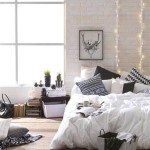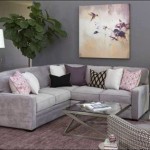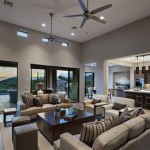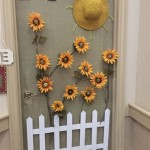How To Decorate Your TV Wall Unit: A Comprehensive Guide
Decorating a TV wall unit requires careful consideration of aesthetics, functionality, and personal style. The TV wall unit is often the focal point of a living room or entertainment space, and its design significantly impacts the overall ambiance. This article provides a comprehensive guide to decorating a TV wall unit, covering essential aspects such as planning, style selection, decoration principles, and practical implementation tips.
Planning and Assessment
Prior to initiating the decoration process, a thorough assessment of the existing space and its limitations is crucial. Begin by measuring the wall where the TV unit will be located. Record the width, height, and depth of the available space. These measurements will inform the selection of the unit's size and configuration. Consider the size of the television itself, ensuring that the wall unit can accommodate it appropriately with adequate clearance on all sides. Failure to consider the television's dimensions beforehand can lead to aesthetic and functional issues.
Next, evaluate the room’s existing design style. Is the room contemporary, traditional, minimalist, or eclectic? The TV wall unit's design should complement the existing style, creating a cohesive look. A modern wall unit, for instance, may appear out of place in a room with predominantly traditional furnishings. Consider colors, textures, and materials used elsewhere in the room when selecting the material and finish of the wall unit.
Functionality is another important aspect of planning. Think about the items that need to be stored or displayed within the unit. Do you need shelving for books, media consoles, or decorative items? Do you require closed storage for items you prefer to keep out of sight? Determine the required storage capacity to prevent clutter and maintain an organized appearance. Consider the placement of electrical outlets and cable management systems. Design the unit to conceal wires and cables, maintaining a clean and uncluttered look.
Finally, establish a budget for the project. The cost of a TV wall unit can vary significantly depending on its size, materials, and complexity. Obtain quotes from different retailers or custom builders to get an idea of the average cost. Allocate funds for the unit itself, installation (if required), and any decorative items you plan to include.
Selecting a Style and Material
The style of the TV wall unit should align with the overall aesthetic of the room and the homeowner’s personal preferences. Various styles are available, each with its unique characteristics. Modern wall units often feature clean lines, minimalist designs, and neutral colors. They may incorporate materials such as glass, metal, and high-gloss laminates. Traditional wall units, on the other hand, tend to be more ornate, with intricate detailing and rich wood finishes. They may include features such as crown molding, raised panel doors, and antique hardware.
Minimalist wall units emphasize simplicity and functionality. They often consist of floating shelves or cabinets with a minimal amount of ornamentation. These units are ideal for smaller spaces or for homeowners who prefer a clean, uncluttered look. Eclectic wall units allow for greater creativity and personalization. They may incorporate a mix of different styles, materials, and colors. This approach is suitable for homeowners who want to create a unique and expressive space.
The choice of materials is equally important. Wood is a versatile material that can be used in a variety of styles. Solid wood is a durable and attractive option but can be more expensive than other materials. Veneer is a thin layer of wood applied to a composite core, offering a more affordable alternative to solid wood. Laminate is a synthetic material that is available in a wide range of colors and patterns. It is a durable and easy-to-clean option, making it suitable for high-traffic areas. Metal is another popular choice for modern wall units. It can be used for frames, shelving, and accents. Glass is often used for doors and shelves, adding a touch of elegance to the unit. Consider the material's durability, maintenance requirements, and aesthetic appeal when making a selection.
Decoration Principles and Techniques
Once the wall unit is installed, the decoration process can begin. Several principles and techniques can be employed to create a visually appealing and balanced arrangement. The principle of balance is crucial. Symmetry can be achieved by placing identical items on either side of the TV or by creating a balanced composition with asymmetrical arrangements. Asymmetry can be more dynamic and visually interesting but requires careful planning to avoid a cluttered or unbalanced look.
Color and texture play a significant role in creating visual interest. Use color to highlight certain areas of the unit or to create a sense of depth. Contrast can be achieved by pairing light and dark colors or by using different textures. Incorporate items with varying heights, shapes, and sizes to create a dynamic composition. Avoid placing items of the same size and shape next to each other, as this can create a monotonous look. Vary the textures of the items on display to add visual interest. Consider using items with smooth, rough, glossy, and matte finishes.
Lighting is an essential element in decorating a TV wall unit. Incorporate accent lighting to highlight specific items or to create a warm and inviting ambiance. LED strip lights can be installed along the shelves or behind the TV to create a soft glow. Spotlights can be used to focus on individual items, such as artwork or sculptures. Ensure that the lighting is not too bright or distracting, as this can interfere with the viewing experience. Position lighting fixtures to avoid glare on the TV screen.
Consider incorporating plants into the decoration scheme. Plants add a touch of nature to the space and can help to soften the hard lines of the wall unit. Choose plants that are suitable for indoor environments and that require minimal maintenance. Succulents, air plants, and ferns are all good options. Group plants together to create a visually appealing arrangement. Use different sizes and shapes of pots to add visual interest.
Personalization is key to creating a space that reflects the homeowner’s individual style and interests. Incorporate personal items, such as photographs, artwork, and souvenirs. These items add character and personality to the space and make it feel more inviting. Arrange personal items in a way that is visually appealing and that tells a story. Rotate items periodically to keep the display fresh and interesting. Avoid overcrowding the unit with too many personal items, as this can create a cluttered look.
Practical Tips for Implementation
Before placing any items on the shelves, clean the surfaces thoroughly. Dust and fingerprints can detract from the overall appearance of the unit. Use a microfiber cloth and a gentle cleaning solution to wipe down the shelves and cabinets. Organize items by category to maintain a cohesive look. Group books by color or size, and arrange decorative items by theme. Use baskets or bins to store smaller items and to keep the space organized.
Consider the viewing angle of the TV when placing decorative items. Avoid placing tall items directly in front of the screen, as this can obstruct the view. Keep the area around the TV relatively clear to minimize distractions. Monitor cable management and maintain organization by using cable ties, sleeves, or a dedicated cable management system to keep wires and cables neatly organized and out of sight. This will prevent clutter and improve the overall appearance of the unit.
Regularly declutter the TV wall unit to maintain a clean and organized appearance. Remove items that are no longer needed or that no longer fit the aesthetic of the space. Dust the shelves and decorative items regularly to prevent dust buildup. Rearrange the items periodically to keep the display fresh and interesting. By following these practical tips, homeowners can create a TV wall unit that is both functional and aesthetically pleasing.
Adaptability is also a key consideration. Interior design trends evolve, and personal preferences may change over time. Choose a TV wall unit and decoration style that allows for easy modifications and updates. Consider modular units that can be reconfigured or expanded as needed. Select a neutral color palette for the unit itself, allowing for changes in accent colors and decorative items without requiring a complete renovation. This approach ensures that the TV wall unit remains a stylish and functional centerpiece of the living space for years to come.

Corner Wall Mounted Tv Ideas What To Put Under Floating Shelves Unit Design Modern Designs

Space Saving Wall Mount Tv Cabinet Designs Designcafe

Impressive Tv Wall Units And Display Shelves Decor Inspirator Unit Designs

11 Tv Wall Ideas That S Both Practical And Stylish

55 Tv Wall Design Ideas For Your Home Trending In 2025

Tv Wall Unit Design For Your Living Room Designcafe

Best 25 Built In Tv Wall Unit Ideas On Cabinet Li Living Room Entertainment Center Storage

200 Modern Living Room Tv Cabinet Design 2025 Wall Unit Home Interior Decorating

L Shaped Tv Unit Design Beautiful Homes

200 Modern Living Room Tv Cabinet Design 2025 Wall Unit Home Interior Decorating Ideas







